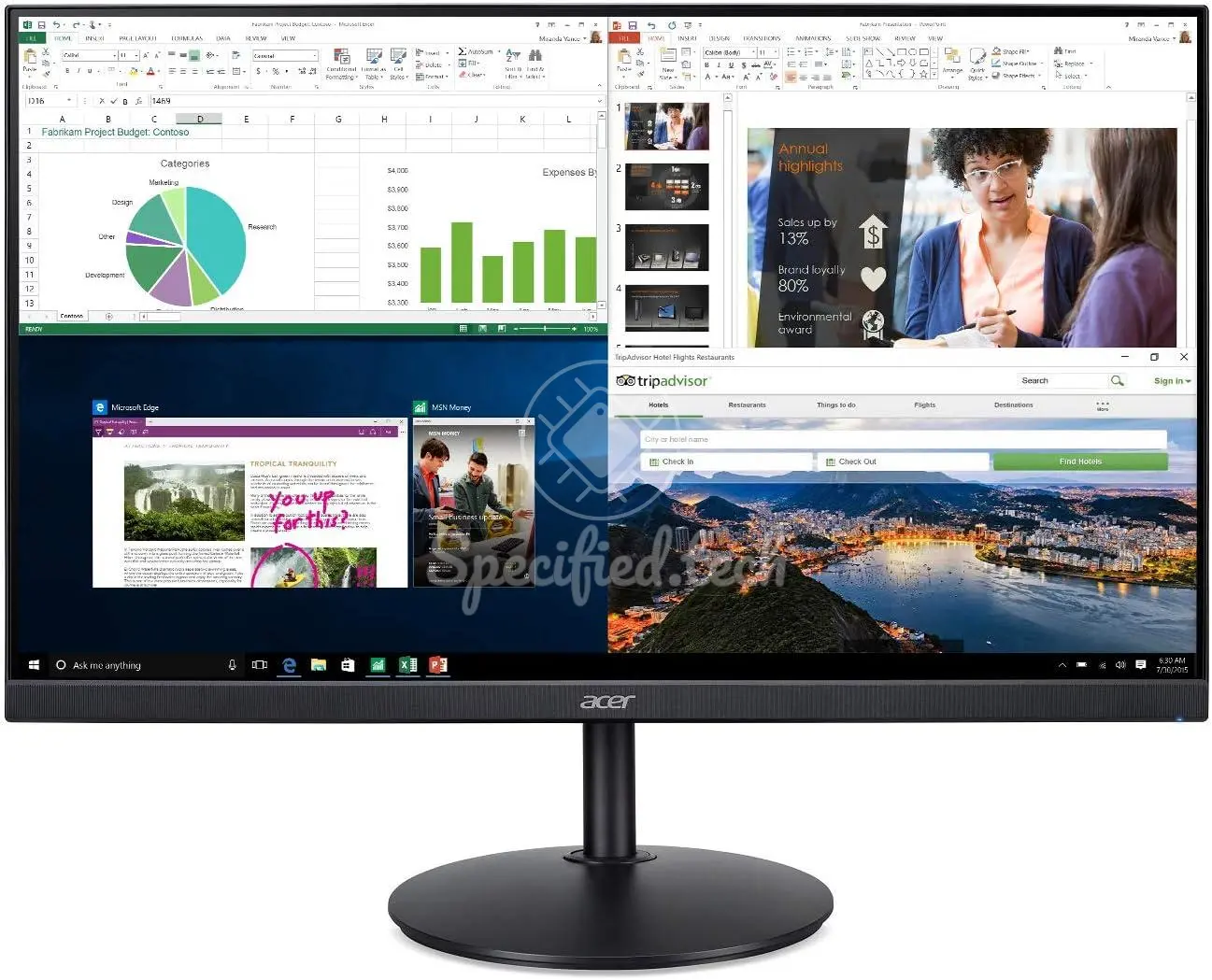
Within this article we will take a closer look at the technical specifications of the CBA242Y Abmiprx monitor from Acer. For this we will talk about all possible categories that could be relevant. To start with, we will look at the display, talk about the design and in the next section we will go into the features of the monitor. Other features such as power consumption, connectors and certifications will follow later in the text.
Display
According to the manufacturer, the display measures 23 inches ( 60.4 cm on the diagonal). Let's keep it short and sweet. The monitor has an aspect ratio of 1.778 : 116. In addition to the aspect ratios and the specified screen diagonal, some enthusiasts may also be interested in the ratio between the monitor surface and the actual display. This ratio describes the general relationship between non-display and display. In other words, approximately 89.2 % of the front surface of the monitor consists of the display, while the rest consists of screen edges and cannot display an image. When setting up several monitors next to each other, it is advisable to give preference to models with the narrowest possible edges. The display is a VA panel. The panel has a resolution of 1920 x 1080 px. The pixel density is 92 ppi. The pixel pitch is 0.275 mm. The continuous possible brightness specified by the manufacturer Acer is 250 nt. The panel is illuminated by W-LED. The built-in panel ensures stable color reproduction of the image, even at deviating viewing angles, by means of its 178 ° (horizontal) viewing angle. Acer promises stable color reproduction moreover within a 178 ° vertical angle. The refresh rate is horizontally seen at the CBA242Y Abmiprx 30 khz to 85 khz. Vertically, however, the image renews at a minimum rate of 56 hz up to 75 hz. The display panel is Anti-glare/Matte (3H).
Color representation
The panel has a bit depth of 8 per color channel, but what does that mean? The number of bits determines how many colors can be encoded for the individual pixels of the display. For an 8-bit panel, for example, this is 256 different colors (2^8 = 256). However, since we usually display three different colors per pixel at the same time, in theory about 16 million (256^3) different colors are possible by mixing the three pixels. A 10-bit panel could even display a billion colors. According to the manufacturer, the coverage of the NTSC 1953 color space is 72 %.
Contrast ratio
Contrast ratio is a common measurement used to represent the maximum relative differences in brightness between black and white. It describes the ability of a screen or projector to produce a high-contrast image and is the quotient of the maximum and minimum displayable luminance. The higher the values are away from each other, the stronger the quantitatively seen difference between black and white is set up, which in turn results in an improved image quality. This monitor from Acer has a static contrast ratio of 3000 : 1 , according to the manufacturer. In contrast to the static contrast ratio, the dynamic contrast ratio changes the brightness of the panel itself in addition to the difference measurement from black to white. In addition to the difference between the brightest and the darkest pixel, the backlight is thus changed. Since the brightness of the panel may not be able to be adjusted exactly to a single pixel, a so-called halo effect is possible. The value of 100000000 : 1 of dynamic contrast ratio for the monitor CBA242Y Abmiprx cannot provide any information about the severity of the halo effect here. Therefore, it is more useful to compare the static contrast ratio.
HDR
The monitor supports all HDR modes listed here:
screen design
Features
- The display/monitor supports Frame Rate Compensation.
Power consumption
The average consumption was given by Acer as 22 w. The maximum power consumption (peak) specified for this monitor is 35 w. In standby mode, the device consumes approximately 0.5 w. When switched off, on the other hand, the monitor consumes only 0.45 w. The monitor can be operated on a 110v power supply. The monitor can be operated on a 220v power supply. The power grid has to supply a frequency of 50 hz to 60 hz.
Further information
- 1.2
- 1.4

